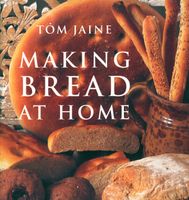Advertisement

Preparation info
- Makes
1
loaf - Difficulty
Medium
Appears in
By Tom Jaine
Published 2005
Bread has always been turned to purposes other than mere sustenance. Just as it is itself a symbol of survival and nourishment, so particular shapes are used to add further layers of meaning: the plaited strands of the Jewish challah recalling the Temple breads, the Greek loaves in the form of a dove at Eastertide, and so on. In England, the most famous modelled loaf is without doubt the harvest sheaf, displayed in church for the Harvest festival. Its apparently complex form is a simple mat


